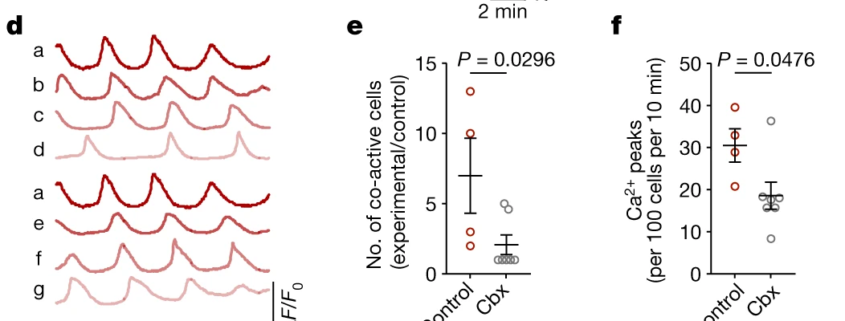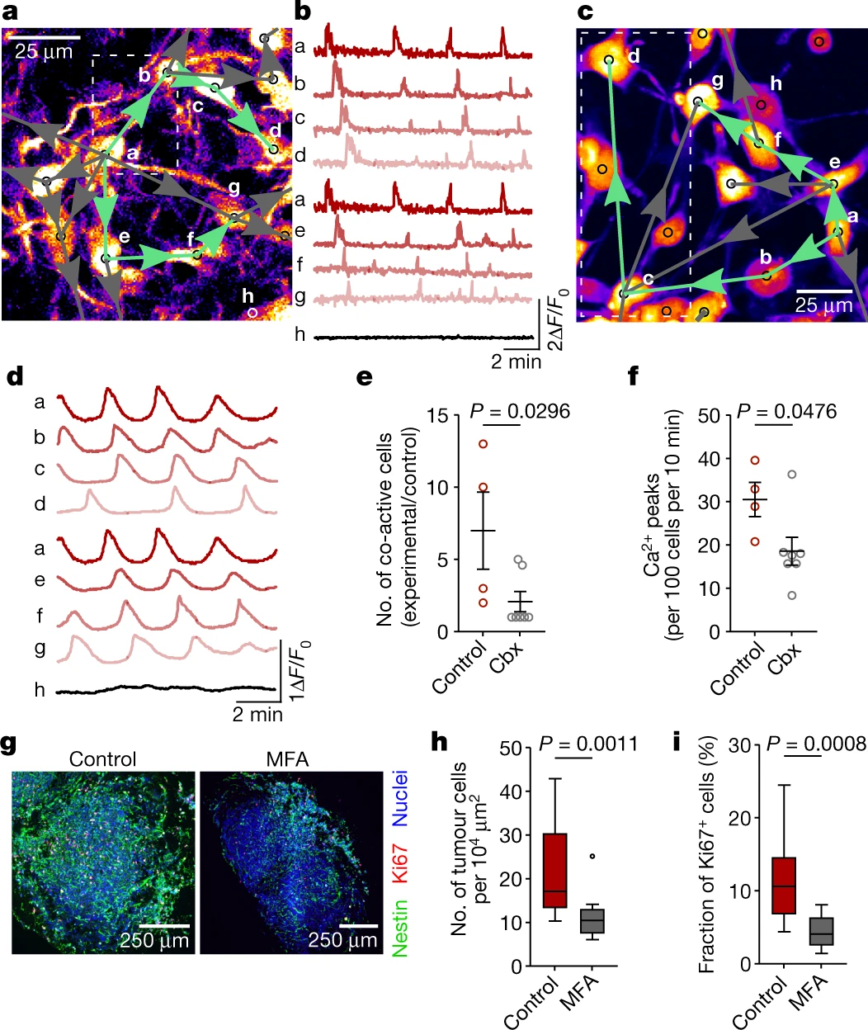Research findings related to UNITE work package A01
Diffuse gliomas, particularly glioblastomas, are incurable brain tumours. They are characterized by networks of interconnected brain tumour cells that communicate via Ca2+ transients. However, the networks’ architecture and communication strategy and how these influence tumour biology remain unknown. Here we describe how glioblastoma cell networks include a small, plastic population of highly active glioblastoma cells that display rhythmic Ca2+ oscillations and are particularly connected to others. Their autonomous periodic Ca2+ transients preceded Ca2+ transients of other network-connected cells, activating the frequency-dependent MAPK and NF-κB pathways. Mathematical network analysis revealed that glioblastoma network topology follows scale-free and small-world properties, with periodic tumour cells frequently located in network hubs. This network design enabled resistance against random damage but was vulnerable to losing its key hubs. Targeting of autonomous rhythmic activity by selective physical ablation of periodic tumour cells or by genetic or pharmacological interference with the potassium channel KCa3.1 (also known as IK1, SK4 or KCNN4) strongly compromised global network communication. This led to a marked reduction of tumour cell viability within the entire network, reduced tumour growth in mice and extended animal survival. The dependency of glioblastoma networks on periodic Ca2+ activity generates a vulnerability that can be exploited for the development of novel therapies, such as with KCa3.1-inhibiting drugs.
Hausmann D, Hoffmann DC, Venkataramani V*, Jung E, Horschitz S, Tetzlaff SK, Jabali A, Hai L, Kessler T*, Azorín DD, Weil S*, Kourtesakis A, Sievers P, Habel A, Breckwoldt MO*, Karreman M*, Ratliff M*, Messmer JM, Yang Y, Reyhan E, Wendler S, Loeb C, Mayer C, Figarella K, Osswald M, Solecki G, Sahm F*, Garaschuk O, Kuner T, Koch P, Schlesner M*, Wick W*, Winkler F*. Autonomous rhythmic activity in glioma networks drives brain tumor growth. Nature. 2023 Jan 613 7942 179 186. *UNITE Principle Investigators




